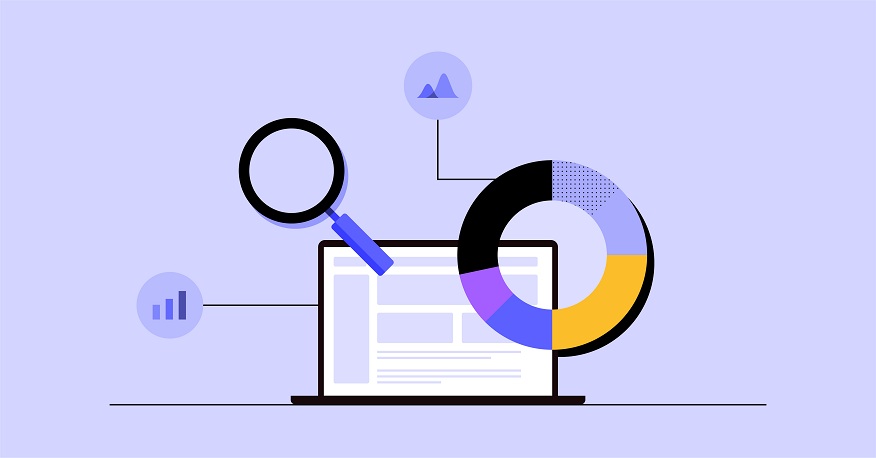
10 Benefits of Self-Service Data Analytics
Self-service data analytics refers to the concept where business users have autonomy and access to analyze data and derive insights, with little or no support needed from IT teams. They can slice and dice data by themselves using drag-and-drop capabilities and simple interfaces in analytics platforms. The self service data analytics platforms democratize data access in organizations. This can lead to numerous benefits when implemented appropriately.
1. Faster and More Insights
The biggest benefit of self-service analytics is speed. Business teams no longer need to manually request data or reports from IT or BI teams and wait for delivery before gaining insights. With self-service platforms, cross-functional business users from marketing, finance, operations etc. get their own direct access to important data sources like CRM, financial databases etc. This agility in accessing latest data facilitates rapid exploratory analysis instead of just routine reporting. Users can uncover new trends and findings at their own pace without being bound to fixed reports/dashboards or relying on others. The flexibility to slice and dice dynamic datasets leads to faster insights. So more insights get generated in shorter periods owing to the self-sufficiency, real-time availability of data and analytics functionalities provided via self-service tools. Business teams find issues or opportunities much quicker.
2. Broader Usage Across Organization
Traditionally, advanced data analysis skills were confined to expert data scientists and business analysts, while most business users lacked data and analytics proficiency. Self-service analytics democratizes analytics across the organizational fabric by making modern BI platforms extremely user-friendly. They provide visually intuitive drag-and-drop interfaces instead of requiring coding or SQL skills. This makes it easy for all business teams like sales, HR, finance etc. to start analyzing data by themselves without formal analytics training. Earlier skill barriers are removed enabling organization-wide adoption. With multiple teams across departments directly accessing and interpreting data for their decisions, general data literacy as an organizational competency grows. Earlier analytics was for the select few but modern self-service platforms take analytics directly to business decision makers in each function through their intuitive and easy-to-adopt design.
3. User Owned Analysis
Self-service analytics empower business teams with complete data analysis autonomy based on their domain context, removing reliance on technical teams. For example, the marketing team can directly access campaign data and analyze customer response trends by geography, acquiring channel etc. as per their priorities without needing prescribed reports from IT. User-driven analysis leverages the business teams’ specialized expertise to surface more relevant insights tied to their goals. Further there is higher confidence in the veracity of findings when users can compile the data and analyze relationships on their own versus using handed-out reports. Since business users own the full cycle – from data to visualization to insights – without dependency, the quality of analysis is higher and more tailored to context than broad templatized reporting.
4. Quicker Decision Making
Decision making is greatly accelerated with self-service analytics, as business users get access to latest data sources without batch processing delays. The iterative loop of data to insight to action gets compressed, leading to quicker reactions to market changes, optimizing business strategies and improved performance. The latency between data availability to decision is vastly reduced, thereby increasing organizational agility.
5. Less Load on IT and Analyst Teams
Self-service analytics solutions take the workload of routine analytics and reporting tasks off of IT and BI teams’ shoulders. This allows technology teams to focus their bandwidth on specialized data engineering tasks like building pipelines, optimizing infrastructure and providing analytics platform assistance when needed. Knowledge users consuming insights don’t get stuck in report requests queues either. This leads to happier stakeholders across.
6. Promotes a Data Driven Culture
As more business teams get access to easy-to-use analytics tools on current and contextual data on a self-service basis, data driven decisioning is bound to proliferate across the organizational culture. Teams feel empowered to experiment, innovate and make data backed judgment calls aligned to business priorities. Leadership can also gain visibility into key business metrics readily, without being constricted by centralized reporting.
7. Efficiency and Cost Savings
The DIY approach in self-service analytics naturally leads to less dependence on IT/BI teams for fulfilling analytics requests, leading to significant cost savings over time. Lesser data pipelining and centralized processing also results in improved efficiency. With lower total cost of ownership compared to traditional solutions and broad user adoption, self-service analytics solutions have one of the best ROI.
8. Augments Existing Analytics Investments
Most self-service analytics solutions don’t require extensive technology migrations and provide flexibility to connect with an organization’s existing data landscape. This allows companies to retain the value of current EDW, BI and analytics implementations while extending access to centralized sources. Business teams get flexibility, while IT maintains governance over sources. This ‘best-of-both-worlds’ approach augments analytics investments already made.
9. Supports Agile Processes
Self-service data analytics enables business teams to support their agile routines by creating insights much faster without dependencies on other teams. Analytics iterations can be run in sync with sprint cadences. The tools provide ample flexibility so new analytics use cases can be implemented swiftly without exhaustive IT support, bolstering agile KPI measurement at individual team levels.
10. Analytics Democratization across Organization
Ultimately, self-service data analytics leads to wider democratization of analytics capabilities, whereby all business teams can leverage data and insights for their specific needs, without friction due to data access or skill barriers that existed before. Non-technical teams also start participating actively in analytics value generation increasing their data fluency and strategic decision making, thereby providing true analytics for all.
Conclusion
The self service data analytics tools in usa comes with advantages like quicker insights, widespread adoption, user-driven analysis, faster decisions making, augmented analytics investments, promoted data culture and cost efficiencies. The data democratization it unleashes leads to higher business performance driven by contextual insights delivered at speed and scale. Leading organizations are embracing it widely to empower their knowledge workers through flexible analytics solutions. Careful change management and discipline in data governance is however needed to ensure success. Used right, it can massively transform organizational analytics maturity over time.





